 August 21, 2014 John E. Ross, KD8IDJ, Editor
| ||||||||||
Webinar Helps to Build Ham Community Cohesion, Momentum for H.R. 4969 An August 13 webinar on "The Amateur Radio Parity Act of 2014" -- H.R. 2014 -- attracted some 450 online participants who wanted to learn more about the proposed legislation and how they could get "I think the webinar really helped to bring members together on H.R. 4969," Edgar said afterward. More than 900 registered for the event. During the webinar, ARRL General Counsel Chris Imlay, W3KD, and ARRL Hudson Division Director Mike Lisenco, N2YBB, discussed the measure and what it would mean for ARRL members and the Amateur Radio community, and explained how individuals could help. Edgar said he's heard a lot of positive feedback from members, who thanked his Division for putting on the webinar and said they were going to assist the campaign by contacting their members of Congress.
Lisenco said this week that 17 co-sponsors now have signed on to H.R. 4969, and he's confident that several more will add their names to the list once Congress reconvenes after its August recess. He said the webinar helped members of the Amateur Radio community to realize that they must become "activists" in order to make things happen. "The overwhelming majority of [ARRL] members have been extremely positive," he said this week, although he conceded that some radio amateurs do not favor H.R. 4969. "You're going to find people who are against it, because that's their political philosophy," he said, "but a lot more want to send letters or visit their representatives. It's just a matter of getting people motivated." Lisenco views H.R. 4969 as a "mom-and-apple-pie" issue. "It's a no-brainer," he said in the wake of the webinar. "'Reasonable accommodation.' How can you say 'no' to that? The more people who see how simple this is, the greater the likelihood that it will get done." Getting the bill passed is a matter of building consensus, and he believes that this is the time to act. "If we don't do it now, the opportunity may not present itself again very soon," he said.
Lisenco said that most questions during the webinar came from those who already live in deed-restricted communities and wanted to know how H.R. 4969 might affect them. He pointed out that some 65 million Americans live in deed-restricted households, and that number is growing. As he explained, the measure would give hams in deed-restricted communities an opportunity to negotiate in good faith with homeowners associations to arrive at a "reasonable accommodation" of their antenna requirements -- nothing more. "Everybody wants the biggest antenna they can put up," he said, "but you have to be practical, you have to be pragmatic. Folks who have not had an opportunity to put up any antenna will be happy with any antenna they can get." Each community is different, he said, and the bill does not specify any particular types of antennas. Lisenco said that with many members of Congress on vacation, it's difficult to get appointments to meet with them to seek their support. Some 1500 members from all over the US signed letters at the ARRL National Centennial Convention urging their representatives to co-sponsor H.R. 4969. Another 500 or so letters went out to members of Congress a week later. But, Lisenco added, face-to-face meetings between members of Congress or their staff members and constituents have proven to be the most successful approach. Lisenco anticipates that activity to gain additional support for the measure will ramp up again next month. Balloting Set for this Fall in Two ARRL Divisions When the ARRL Board of Directors gathers for its Annual Meeting in January 2015, there will be some new faces around the table. ARRL members in the Atlantic Division will elect a new Director and Vice Director, while members in the Great Lakes Division will choose a Vice Director. Two sitting directors have opted not to run for election: Cliff Ahrens, K0CA, who was appointed in 2010 to succeed Director, now Honorary Vice President, Bruce Frahm, K0BJ, in the Midwest Division, and Bill Edgar, N3LLR, who has headed the Atlantic Division since 2006. Succeeding Ahrens as Midwest Division Director next January 1 will be current Vice Director Rod Blocksome, K0DAS, the sole candidate for the position. He has served as Vice Director since 2010, when he was appointed to succeed Ahrens. No candidates stepped forward to run for the Vice Director's slot that Blocksome is vacating, however, so ARRL President Kay Craigie, N3KN, will appoint someone to the post, once it is officially declared open.
In the only other contest, members in the Great Lakes Division will choose between incumbent Vice Director Tom Delaney, W8WTD, and Steve Putman, N8ZR, to fill the Vice Director's chair. Delaney was appointed as Vice Director earlier this year after the former Vice Director, Dale Williams, WA8EFK, became Director when Jim Weaver, K8JE, stepped down from the Board. Williams is the only candidate for Great Lakes Division Director and has been declared elected. Incumbents in the Dakota and Delta divisions also are running unopposed and have been declared elected. They are Dakota Division Director Greg Widin, K0GW, and Vice Director Kent Olson, KA0LDG, and Delta Division Director David Norris, K5UZ, and Vice Director Ed Hudgens, WB4RHQ. Ballots in contested races will be counted and successful candidates announced on November 21. Those elected take office for 3-year terms starting at noon Eastern Time on January 1, 2015. Southern Florida Section Manager Wins Full Term, New SMs on Deck in Two Other Sections ARRL Southern Florida Section Manager Jeff Beals, WA4AW, has won a full term in his own right, after being appointed to the post earlier this year. In the just-completed summer election cycle, Beals, of Loxahatchee, received 570 votes to 270 for his challenger, Tom Gallagher, NY2RF, of West Palm Beach. Ballots were counted on August 19, at ARRL Headquarters. Beals will begin his 2-year term of office on October 1. He has served as Southern Florida Section Manager since June 1, when he was tapped to complete the term of former Section Manager David Fowler, K4DLF, who stepped down because of increased work responsibilities. An ARRL Life Member, Beals has been licensed since the early 1960s. Prior to becoming SM, Beals was an Assistant Section Manager and had held several other section-level leadership positions over the years. He served as ARRL Southeastern Division Vice Director from 2009 until 2011.
It will be a husband-and-wife swap in the Western New York Section, as Laura Peters-Mueller, N2LJM, of Falconer -- the only nominee for the position -- takes over the reins from her husband, John Mueller, K2BT, who opted not to run for another term. He is a candidate in a three-way race for Atlantic Division Vice Director. Peters-Mueller has been the Western New York Assistant Section Manager for the past 2 years. Several sitting ARRL Section Managers faced no opposition and have been declared elected for 2-year terms beginning October 1. They are Betsey Doane, K1EIC (Connecticut); Edward Stuckey, AI7H (Idaho); Skip Jackson, KS0J (Minnesota); Lynn Nelson, W0ND (North Dakota); Scott Yonally, N8SY (Ohio); Rene Fonseca, NP3O (Puerto Rico), and Frederick Kleber, K9VV (Virgin Islands). Some ARRL Website Services to Be Down for Maintenance Because of ARRL website maintenance and upgrading, some website services will be unavailable from 0000 until 1000 UTC on Saturday, August 23 (ie, starting the evening of Friday, August 22, in US time zones) and again from 0400 until 1000 UTC on Monday, August 25. Outside e-mail to @arrl.org addresses and @reflector.arrl.org addresses will be queued for later delivery. Logbook of The World (LoTW) and the ARRL Centennial QSO Party, and Online DXCC pages will be unavailable. The ARRL website will remain up, but the e-store will not be available for making purchases. We apologize for any inconvenience. Support ARRL and Be Rewarded! Sign up today for the ARRL Visa Signature® Card and be reward Disclaimer: Subject to credit approval. Accounts must be open and in good standing (not past due) to earn statement credit. Please wait 6-8 weeks after meeting threshold for account to be credited. The creditor and issuer of the American Radio Relay League Card is U.S. Bank National Association, pursuant to a license from Visa U.S.A. Inc. © 2014 U.S. Bank National Association. Pat Barkey, N9RV, Named as Next National Contest Journal Editor Well-known contester Pat Barkey, N9RV, of Bonner, Montana, will become the 15th editor of National Contest Journal (NCJ) effective with the January/February 2015 issue. He takes over from Kirk Pickering, K4RO, who has served as NCJ's editor since 2012. Pickering said he believes Barkey will bring a fresh perspective to NCJ readers.
"I am delighted that N9RV has stepped up to take the role as the next NCJ Editor," Pickering said. "Pat has decades of experience in both the multioperator and single-operator categories. His results from his formidable home stations and from multioperator stations such as K3LR speak for themselves." Barkey said he considers it "an honor and a privilege" to be tapped as NCJ's next editor. "When you take a look at the call signs of the people who have held this job over the years, it reads like a contesting hall of fame -- literally in many cases," he said this week. "I am particularly humbled to be following in the footsteps of Kirk Pickering, K4RO, who has done such an outstanding job in managing and growing NCJ." Barkey said he'd like to see NCJ continue and expand its role as the face of Amateur Radio contesting, while continuing to provide a gateway for newcomers to radiosport. "I come to contesting as a station builder and contest operator," Barkey said. "I know there are a lot of people who are totally devoted to contesting who have just as much passion for building and planning as they do for operating. I want to make sure that NCJ always has something for them." N9RV has been contesting since he was 11 years old, and he continued to be active in radiosport through graduate school and into his adult life. His day job is as an economist directing a business research center at the University of Montana, a position he's held since 2007. First licensed in 1967 as WN8YVR in Michigan, Barkey attended the University of Michigan (also attended by N4KG, K8QKY, and N8UM) in the 1970s and has contested from numerous top-tier contest stations over the years. "I'm mostly a CW guy," he allowed, "but I do dust off the mic every now and then." Barkey is an ARRL Life Member. W1AW Centennial Operations Heading to Arizona, Maine The ARRL Centennial W1AW portable operations taking place throughout 2014 from each of the 50 states are now in Ohio and North Dakota. They will relocate at 0000 UTC on Wednesday, August 27 (the evening of August 26 in US time zones), to Arizona (W1AW/7), and Maine (W1AW/1). During 2014 W1AW will be on the air from every state (at least twice) and most US territories, and it will be easy to work all states solely by contacting W1AW portable operations.
Working W1AW/x from each state is worth 5 points per mode/contact, even when working the same state during its second week of activity. To earn the "Worked all States with W1AW Award," work W1AW operating portable from all 50 states. (Working W1AW or W100AW in Connecticut does not count for Connecticut, however. For award credit, participants must work W1AW/1 in Connecticut.) A W1AW WAS certificate and plaque will be available. The ARRL has posted an ARRL Centennial QSO Party leader board that participants can use to determine how many points they have accumulated in the Centennial QSO Party and in the W1AW WAS operations. Log in using your Logbook of The World (LoTW) user name and password, and your position will appear at the top of the leader boards. Results are updated daily, based on contacts entered into LoTW. Chasqui-1 Amateur Radio CubeSat Deployed from ISS A team of Russian cosmonauts has deployed the Peruvian Chasqui-1 Amateur Radio CubeSat into orbit during a spacewalk from the
International Space Station (ISS). Expedition 40 Flight Engineers Alexander Skvortsov and Oleg Artemyev released the tiny, 1 kg spacecraft at 1423 UTC on August 18. Chasqui-1 is a project of the Peruvian National University of Engineering (Universidad Nacional de Ingenieria or UNI), in collaboration with the Southwestern State University in Kursk, Russia. According to AMSAT-UK, the CubeSat's batteries were charged last week. It traveled to the ISS in February 2014 on board a Progress cargo craft. As Peru's first satellite, its main goal is improving UNI's satellite technology, its builders said. The satellite is intended to take pictures of Earth and relay them to the ground station. It carries two cameras, one operating in the visible light spectrum and the other in the infrared spectrum. Amateur Radio is a secondary payload. Chasqui-1's beacon on 437.025 MHz (±10 kHz Doppler shift) can transmit either 1200 bps AFSK AX.25 or 9600 bps GMSK. As of August 19, the beacon had not been heard. Venerable LUSAT-1 (OSCAR 19) Takes to the Dark Side Set to celebrate its silver anniversary next year, LUSAT-1 -- which is also known as OSCAR 19 or LO-19 -- appears once again to be functioning, sort of, when not in sunlight. At this point, OSCAR 19 is only transmitting telemetry; its digital transponder has not been reported to be operational.
"It's almost a miracle that after almost 25 years, LUSAT's vintage Ni-Cd batteries can receive and hold [a] charge," he said. Launched in 1990 from Kourou, French Guyana, on an Ariane 4 vehicle, the satellite -- Argentina's first -- has completed more than 128,000 orbits, and is one of the oldest active Amateur Radio satellites. The satellite carries a digital store-and-forward packet transponder with uplink frequencies at 145.84, 145.86, 145.88, and 145.90 MHz 1200 bps FM, with AX.25 protocol downlink at 437.125 MHz SSB. An audio clip, tracking information, and listener reports are available via the AMSAT-LU website. Reports are welcome via e-mail. EMF 2014: It Takes an Amateur Radio Village An Amateur Radio Village and special event station GB2EMF will be among the highlights for hams at the Electromagnetic Field "EMF 2014" event Friday through Sunday, August 29-31, just south of Bletchley in the UK.
"EMF 2014 is a festival for anyone interested in radio, electronics, space, homebrewing, robots, UAVs, 3D printing, DIYBio, Internet culture or pretty much anything else you can think of," its sponsors proclaim. "It is a volunteer effort by a non-profit group, inspired by European and US hacker camps like Chaos Communication Camp, HAR, and ToorCamp. Imagine a camping festival with a power grid and high-speed Internet access; a temporary village of geeks, crafters, and technology enthusiasts that's lit up by night, and buzzing with activity during the day." Sponsors are anticipating more than 1000 "curious people" to show up for the event to attend forums and workshops as well as take part in the music, games, and installations that dot the site. "Attendees are invited to set up their own villages -- camps within the camp -- where like-minded people can camp together and put on their own activities."
The EMF 2014 team will provide power and an Internet connection to visitors' tents. Special event station GB2EMF will operate from the Amateur Radio Village. Campers' identification tags consist of a "fun piece of technology" that attendees can take home and use following the event. "We call our badge TiLDA, and every attendee will receive one when they arrive at the camp!" sponsors said in a blog post. TiLDA is a reprogrammable battery-powered development board that visitors wear on a lanyard. "By default it communicates with all the other badges on site, playing a networked game that encourages you to meet other people with differing interests," the sponsors explained. Visit the Electromagnetic Field Facebook page for more information. -- Thanks to AMSAT News Service/AMSAT-UK Global Amateur Radio Emergency Communications Conference 2014 Takes a Technological Tack The 2014 Global Amateur Radio Emergency Communications Conference (GAREC 2014) held August 14-15 in Huntsville, Alabama, and hosted by the ARRL Alabama Section and the Huntsville Hamfest, offered an opportunity for participants to share presentations and perspectives from around the globe. Greg Sarratt, W4OZK, organized this year's GAREC event, which focused on the application of advanced technologies in emergency communication. "GAREC 2014 participants included Amateur Radio operators from around the world who are highly dedicated to emergency communication," Sarratt said. "GAREC participants realized that the role of Amateur Radio in emergency communication is constantly changing and that we must continue to adapt to the needs of our partner served agencies, including embracing emerging technologies and new challenges, in order to remain relevant and provide the high level of service our partners have come to rely on."
Delegates attended from all three International Amateur Radio Union (IARU) regions. In addition to hearing IARU regional reports, attendees took part in a "desktop" exercise. Presentations covered the use of Amateur Radio's emergency communication role as a tool to help promote Amateur Radio, The Salvation Army Team Emergency Radio Network (SATERN) program, employment of digital modes and remote station control, the deployment of the Military Auxiliary Radio Service (MARS) for humanitarian assistance and disaster relief, and a combined Emergency Services Dispatch Center to provide interoperability. Emerging themes included the importance of regularly reaching out to served agencies to ensure that their communication needs are being met and to promote Amateur Radio as a trusted emergency response partner. The role of social media to disseminate near real-time information during an event also came up for discussion. Sarratt said the second day of the conference concentrated on emerging and advanced technologies. "Participants shared information about recent disasters and how advanced technologies are playing a critical role in Amateur Radio emergency communication," he said. Reports on emergency and disaster situations in which Amateur Radio played a crucial role included Typhoon Haiyan in the Philippines and flooding in Brazil and Thailand. Delegates reaffirmed that disaster response needs differ from one country to another, to reflect the local and regional landscape. They also agreed that the IARU HF Emergency Message Procedures, which include such elements net procedure, standard messaging protocols, and activation protocols, should serve to establish baseline standards among countries and regions, enhancing, but not replacing, existing standard operating procedures. "The role of Amateur Radio in emergency communications is constantly changing," a concluding statement said. "It must continue to adapt to the needs of its partners including embracing emerging technologies and new challenges. All GAREC participants past and present are invited to submit their ideas or examples of local best practice to the next conference in 2015. GAREC participants recognize that to recruit the next generation of emergency communicators, strong emphasis needs to be paid to recruiting new licensees to the hobby with attractive program training and support. This includes the development of youth and mentoring programs." Sarratt said local television media interviewed him, as well as IARU Region 1 Emergency Communications Coordinator Greg Mossop, G0DUB, and ARRL Regulatory Information Manager Dan Henderson, N1ND, for an evening news broadcast. "Many thanks to everyone for helping to make GAREC 2014 a great event!" he added. For its 10th event, the GAREC Conference will return to the location of the first GAREC Conference -- Tampere, Finland -- in June 2015. -- Thanks to Greg Sarratt, W4OZK, and Jim Linton, VK3PC First Joint Tribal Emergency Management Conference Held ARES and RACES were featured during the National Tribal Emergency Management Conference, August 13-15 in Airway Heights, Washington. The largest gathering of tribal disaster preparedness, recovery, hazard mitigation, and homeland security professionals in the country was organized by the National Tribal Emergency Management Council (NTEMC) in conjunction with the Northwest Tribal Emergency Management Council (NWTEMC), and was hosted at a facility owned by the Kalispel Tribe. Tribal emergency management leaders who attended this conference expressed interest in building an Amateur Radio component into their emergency/disaster preparedness plans.
During pre-conference activities on August 11 and 12, Jack Tiley, AD7FO, and Bob Peterson, KE7RAP, taught a Technician license class, and eight students passed the Technician examination. In response to a National Weather Service severe thunderstorm warning on the evening of August 12, Spokane County EC Robert Wiese, W7UWC, coordinated a weather-spotting net on the W7GBU 147.30 MHz repeater. While conference attendees experienced the thunderstorm activity, they were unaware of the net. A subsequent description of the net provided current and relevant additional content for the "Disaster Communications via Amateur Radio" presentation on Wednesday morning, however. During an over-the-air VHF demonstration with amateurs located elsewhere in Spokane County, a FEMA Citizen Corps volunteer talked briefly with Lori Aberle, KG7IEO. A description of the repeater's coverage area by Scott Christiansen, WA7SRC, garnered very positive comments from those attending the conference.
On Friday, attendees were able to view a live Ad Hoc Mesh Network during the "Amateur Radio Digital Data Communications" presentation. ARES/RACES groups were encouraged to welcome tribal communities in their respective areas and to ensure interoperability with the tribal EOC as part of their operation plan and to invite tribal emergency communication teams to take part in local drills and exercises as well as to licensing classes. -- Thanks to Steve Aberle, WA7PTM, ARRL Western Washington Section Official Emergency Station (via the ARRL ARES E-Letter) Pirate Radio Ship Redux: Radio Caroline Returns, Radio Veronica, Northsea Special Event Set The renegade Radio Caroline, which entertained rock 'n' roll fans in the UK and Europe from the 1960s until the 1990s from offshore "Both stations transmitted from radio ships on the North Sea and had millions of listeners," Rietveld recounted in an article on Southgate Amateur Radio News. "Every day, good programs, fantastic DJs, nice jingles and radio tunes! The DJs became sort of family -- a part of your life!" Rietveld said Radio Veronica transmitted on medium wave, while Radio Northsea International transmitted on medium wave, shortwave, and FM.
Rietveld, who enjoys operating from various locations, also occasionally operates marine/maritime mobile, and said he is on the air from PD0ARI every day. According to Chris Arundel, G4KDX, another special event station, PA40VRON, will be on the air in late August to mark the Radio Veronica shutdown 40 years ago. Radio Caroline, which was motivated by similar pirate radio operations on the high seas by Scandinavian and Dutch broadcasters, began operation in 1964. Named either after Caroline Kennedy or after a girlfriend of its founder, Ronan O'Rahilly, Radio Caroline transmitted on various medium-wave frequencies over the years, starting out on 1520 kHz -- announced as "199 meters, since that rhymed with "Caroline." The station ran nearly 20 kW, using linked Continental Electronics transmitters The earlier Radio Caroline inspired a number of competing offshore pirate radio stations, and these operations eventually compelled the staid BBC to start airing more popular musical fare. Radio Caroline finally departed the airwaves as a pirate broadcaster in 1991, after losing its anchor and running aground. The story of the shipboard station was fictionalized in the movie "The Boat That Rocked," which starred the late Phillip Seymour Hoffman. The latter-day incarnation of Radio Caroline has been a satellite and Internet broadcaster. -- Thanks to Southgate Amateur Radio News A Century of Amateur Radio and the ARRL Continuing through the 1970s, QST articles written by Lew McCoy, W1ICP, helped Novice licensees and other new hams by describing various transmitters, amplifiers, antennas, and station accessories, as well as coaching newcomers on general radio knowledge and techniques. The first two-way Amateur Radio laser contact (at 475 THz) took place in 1971 between WA8WEJ and W4UDS, operating inside a building of the US Air Force Academy. Over the years, many other radio services tried to take 220 MHz away from the Amateur Service. In 1971, the Electronic Industries Association petitioned the FCC to reallocate approximately one-half of the band to the Citizens Radio Service. The effort failed. John Troster, W6ISQ, continued his fine humorous articles and spoofs in QST during the 1970s, amusing us greatly. His "fictional" tales often reminded us of real experiences we had along the same lines.
A May 1972 QST article introduced readers to a new device that was beginning to have a few practical applications -- the light-emitting diode (LED). As the Apollo space missions began, W4HHK and K2RIW developed receiving systems to listen in on the 2287.5 MHz signals from the program's spacecraft, as reported in June 1972 QST. During the 1970s, interest continued in electronic keyers, and many articles on the topic appeared in QST. New developments included automatic character and word spacing and solid-state memories for repeating often-used messages such as CQs and contest exchanges. In late 1973, after discussions that spanned many years, the ARRL Board of Directors voted to establish the ARRL Foundation. The log-periodic dipole array and its great utility in amateur use were described by K4EWG in the November 1973 QST.
Amateur DXpeditions increased in popularity during the 1970s. These ranged from casual "holiday" operation by businessmen or tourists to stand-out expeditions, such as the KP6KR Kingman Reef operation in 1974. That adventure included a two-day search to find the island, 5535 contacts in just under 30 hours of operation, and a white-knuckle departure during gale-force winds. QST articles in the 1970s often reported on the progress of both amateur TV (ATV) on the UHF bands and slow-scan TV (SSTV) on the HF bands, as well as showing station equipment and setups. Radio contesting started to become more automated during the 1970s. In the February 1975 QST, WA4HQW presented "The Contester," a semi-automatic contest station controller that sent CW, checked dupe sheets, recorded the time, filled in the log, and kept a running contact count. One of WA4HQW's observations has been overtaken by events: "There are things that no machine can do, such as copy two or three CW signals at once, which will leave the human operator king for a long time to come." By 1974, QST was publishing reports of the League's preparations -- already in progress -- for the 1979 World Administrative Radio Conference (WARC) to address the allocation of the limited radio spectrum among radio amateurs and other users. WARC-1979 had a very positive outcome for the Amateur Service. -- Al Brogdon, W1AB The K7RA Solar Update Solar indices and outlook are stronger this week. The average daily sunspot number rose 19.7 points to 114.6, while average daily solar flux increased 25.7 points to 138.8. Average daily estimated planetary A index dropped from 7.4 to 4.3. The day with the greatest geomagnetic activity was Tuesday, August 19, when the planetary A index was 17. This was caused by a weak coronal mass ejection (CME), but according to Spaceweather.com the inner magnetic structure "contained a region of south-pointing magnetism that partially cancelled Earth's north-pointing magnetic field." This opened a crack in the magnetosphere, and solar wind poured through, triggering unexpectedly brilliant aurora. The outlook for solar activity has improved. A week ago the average predicted solar flux for the next 10 days, August 21-30, was 118.5. Now it is 134.5, a robust increase of 16 points.
Predicted planetary A index is 8 on August 21-22, 5 on August 23-27, 8 on August 28-29, then 5, 12, 10 and 8 on August 30 through September 2, 5 on September 3-5, 8 on September 6-7, 10 on September 8, 5 on September 9-14, 12 and 14 on September 15-16, and 8 on September 17-18. This weekly "Solar Update" in The ARRL Letter is a preview of the "Propagation Bulletin" issued each Friday. The latest bulletin and an archive of past propagation bulletins are on the ARRL website. In Friday's bulletin look for an updated forecast and a report from N0JK on some late season sporadic E activity on 6 meters. Send me your reports and observations. Just Ahead in Radiosport
See the ARRL Contest Calendar for more information. Upcoming ARRL Section, State and Division Conventions and Events
Find conventions and hamfests in your area. ARRL -- Your One-Stop Resource for
Subscribe to...
Free of charge to ARRL members...
| ||||||||||
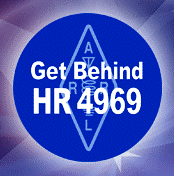 involved in speeding its passage. US Rep Adam Kinzinger (R-IL) introduced H.R. 4969 in June, with US Rep Joe Courtney (D-CT) as its first co-sponsor. This bipartisan initiative would direct the FCC to apply the "reasonable accommodation" three-part test of the
involved in speeding its passage. US Rep Adam Kinzinger (R-IL) introduced H.R. 4969 in June, with US Rep Joe Courtney (D-CT) as its first co-sponsor. This bipartisan initiative would direct the FCC to apply the "reasonable accommodation" three-part test of the 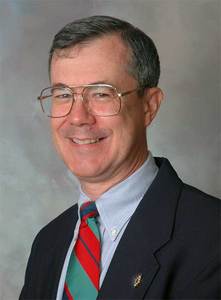
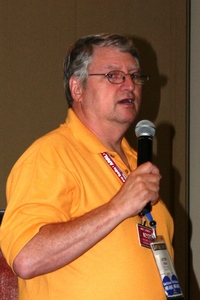
 Two candidates are hoping to succeed Edgar in the Atlantic Division. They are current Vice Director Tom Abernethy, W3TOM, and Phil Theis, K3TUF, who ran for the office in 2011. There is a three-way race for the Vice Director's position. Running are Scott Bauer, W2LC, who served previously as Western New York Section Manager; Bob Famiglio, K3RF, the current Eastern Pennsylvania Section Manager, and John Mueller, K2BT, the current Western New York SM.
Two candidates are hoping to succeed Edgar in the Atlantic Division. They are current Vice Director Tom Abernethy, W3TOM, and Phil Theis, K3TUF, who ran for the office in 2011. There is a three-way race for the Vice Director's position. Running are Scott Bauer, W2LC, who served previously as Western New York Section Manager; Bob Famiglio, K3RF, the current Eastern Pennsylvania Section Manager, and John Mueller, K2BT, the current Western New York SM.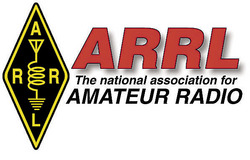 Two other sections -- Oklahoma and Western New York -- will be getting new SMs on October 1. The Oklahoma Section will be led by Lloyd Colston, KC5FM, of Altus. Colston was the only nominee for the volunteer post. Current SM Kevin O'Dell, N0IRW, of Perry, decided not to run for a new term of office after serving since 2010. Colston has been the Public Information Coordinator in Oklahoma for the past 4 years.
Two other sections -- Oklahoma and Western New York -- will be getting new SMs on October 1. The Oklahoma Section will be led by Lloyd Colston, KC5FM, of Altus. Colston was the only nominee for the volunteer post. Current SM Kevin O'Dell, N0IRW, of Perry, decided not to run for a new term of office after serving since 2010. Colston has been the Public Information Coordinator in Oklahoma for the past 4 years.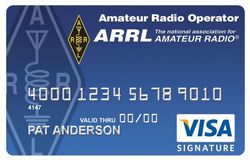 ed. When you apply and make a first purchase on the card, you'll receive 2500 bonus points to start you off. With every purchase you make with this card, a portion of your purchase will be contributed to the ARRL. Apply today!
ed. When you apply and make a first purchase on the card, you'll receive 2500 bonus points to start you off. With every purchase you make with this card, a portion of your purchase will be contributed to the ARRL. Apply today! 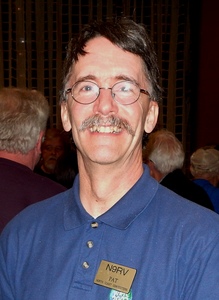
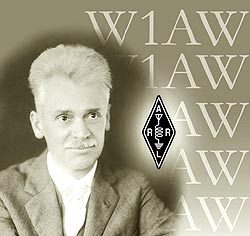 The
The 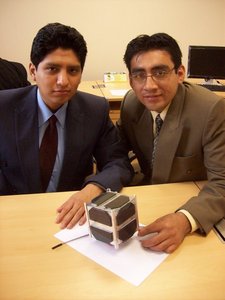
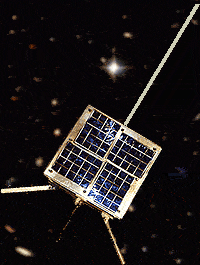 "We knew that our LUSAT started transmitting again a couple of years ago, but only when illuminated by sunlight and was not heard during the night," Pedro Converso, LU7ABF, reported to the AMSAT-BB. During a recent nighttime pass, though, he was surprised to hear "the usual strong 900 mW continuous carrier on 437.125 MHz," 22 minutes after LO-19 had emerged from Earth's shadow.
"We knew that our LUSAT started transmitting again a couple of years ago, but only when illuminated by sunlight and was not heard during the night," Pedro Converso, LU7ABF, reported to the AMSAT-BB. During a recent nighttime pass, though, he was surprised to hear "the usual strong 900 mW continuous carrier on 437.125 MHz," 22 minutes after LO-19 had emerged from Earth's shadow.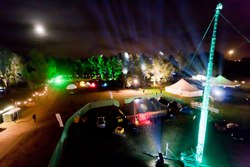
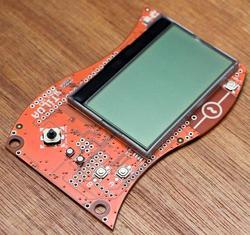
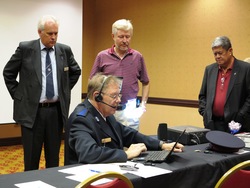
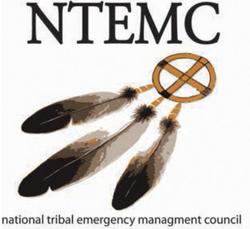 Of the 566 recognized tribes in the US, the Pacific Northwest is home to 272, and 29 are in the State of Washington. Conference guests included Secretary of the US Department of Homeland Security Jeh Johnson, US Sen Mark Begich, US Sen Jon Tester, Acting FirstNet General Manager T.J. Kennedy (US Department of Commerce), and others. Approximately 400 attended.
Of the 566 recognized tribes in the US, the Pacific Northwest is home to 272, and 29 are in the State of Washington. Conference guests included Secretary of the US Department of Homeland Security Jeh Johnson, US Sen Mark Begich, US Sen Jon Tester, Acting FirstNet General Manager T.J. Kennedy (US Department of Commerce), and others. Approximately 400 attended.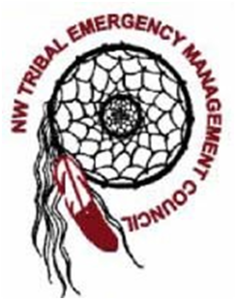 ARRL Idaho Section Manager Ed Stuckey, AI7H, set up an HF station on Thursday, stringing a 40 meter dipole between speaker stands in a hallway outside the conference rooms. Although the "Faraday cage" provided by the building inhibited nearly all attempts at indoor HF reception, the display generated considerable interest from conference attendees for more than 4 hours, following the "Building Your Amateur Radio Station" presentation.
ARRL Idaho Section Manager Ed Stuckey, AI7H, set up an HF station on Thursday, stringing a 40 meter dipole between speaker stands in a hallway outside the conference rooms. Although the "Faraday cage" provided by the building inhibited nearly all attempts at indoor HF reception, the display generated considerable interest from conference attendees for more than 4 hours, following the "Building Your Amateur Radio Station" presentation.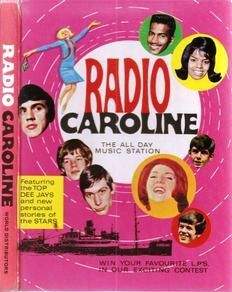 shipboard transmitters and studios, is back on the airwaves from the River Blackwater off England's Essex Coast using a temporary, low-power license. It has plans to obtain a permanent AM broadcasting authorization. Radio Caroline was among the first, and most famous, pirate radio ships of the era. In a related vein, Arie Rietveld, PD0ARI, of Giessenburg, The Netherlands, has announced plans to operate special event station PD538RNI to commemorate two other pirate radio ship broadcasters from rock's early days -- Radio Veronica, which last broadcast on 538 meters (557 kHz), and Radio Northsea International (RNI). PD538RNI will operate on phone from August 28 until September 19 on 10, 20, and 40 meters. Rietveld said his love of radio stemmed from listening to Radio Veronica and RNI in the early 1970s.
shipboard transmitters and studios, is back on the airwaves from the River Blackwater off England's Essex Coast using a temporary, low-power license. It has plans to obtain a permanent AM broadcasting authorization. Radio Caroline was among the first, and most famous, pirate radio ships of the era. In a related vein, Arie Rietveld, PD0ARI, of Giessenburg, The Netherlands, has announced plans to operate special event station PD538RNI to commemorate two other pirate radio ship broadcasters from rock's early days -- Radio Veronica, which last broadcast on 538 meters (557 kHz), and Radio Northsea International (RNI). PD538RNI will operate on phone from August 28 until September 19 on 10, 20, and 40 meters. Rietveld said his love of radio stemmed from listening to Radio Veronica and RNI in the early 1970s.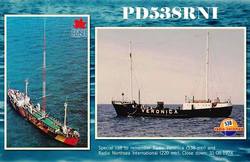 "Radio Northsea International on shortwave triggered me to listen to [shortwave] radio stations, and a new hobby was born," he said. RNI and Radio Veronica shut down on August 31, 1974, after the Dutch government made changes in the radio regulations. Radio Veronica subsequently went legit and continues to operate. After the pirate stations went dark, Rietveld got his ham radio license. "My love for radio started by listening to Radio Veronica and Radio Northsea International!" he said.
"Radio Northsea International on shortwave triggered me to listen to [shortwave] radio stations, and a new hobby was born," he said. RNI and Radio Veronica shut down on August 31, 1974, after the Dutch government made changes in the radio regulations. Radio Veronica subsequently went legit and continues to operate. After the pirate stations went dark, Rietveld got his ham radio license. "My love for radio started by listening to Radio Veronica and Radio Northsea International!" he said..jpg)
.jpg)
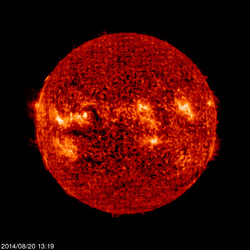 Predicted solar flux is 120 on August 21, 130 on August 22-24, 140 on August 25-26, 145 on August 27-28, 135 and 130 on August 29-30, 125 on August 31 through September 1, then 130, 125, 120, 115 and 110 on September 2-6, 105 on September 7-9, 100 on September 10, and 110 on September 11-12. It meanders a bit, then rises to 140 on September 24 before declining again.
Predicted solar flux is 120 on August 21, 130 on August 22-24, 140 on August 25-26, 145 on August 27-28, 135 and 130 on August 29-30, 125 on August 31 through September 1, then 130, 125, 120, 115 and 110 on September 2-6, 105 on September 7-9, 100 on September 10, and 110 on September 11-12. It meanders a bit, then rises to 140 on September 24 before declining again.







